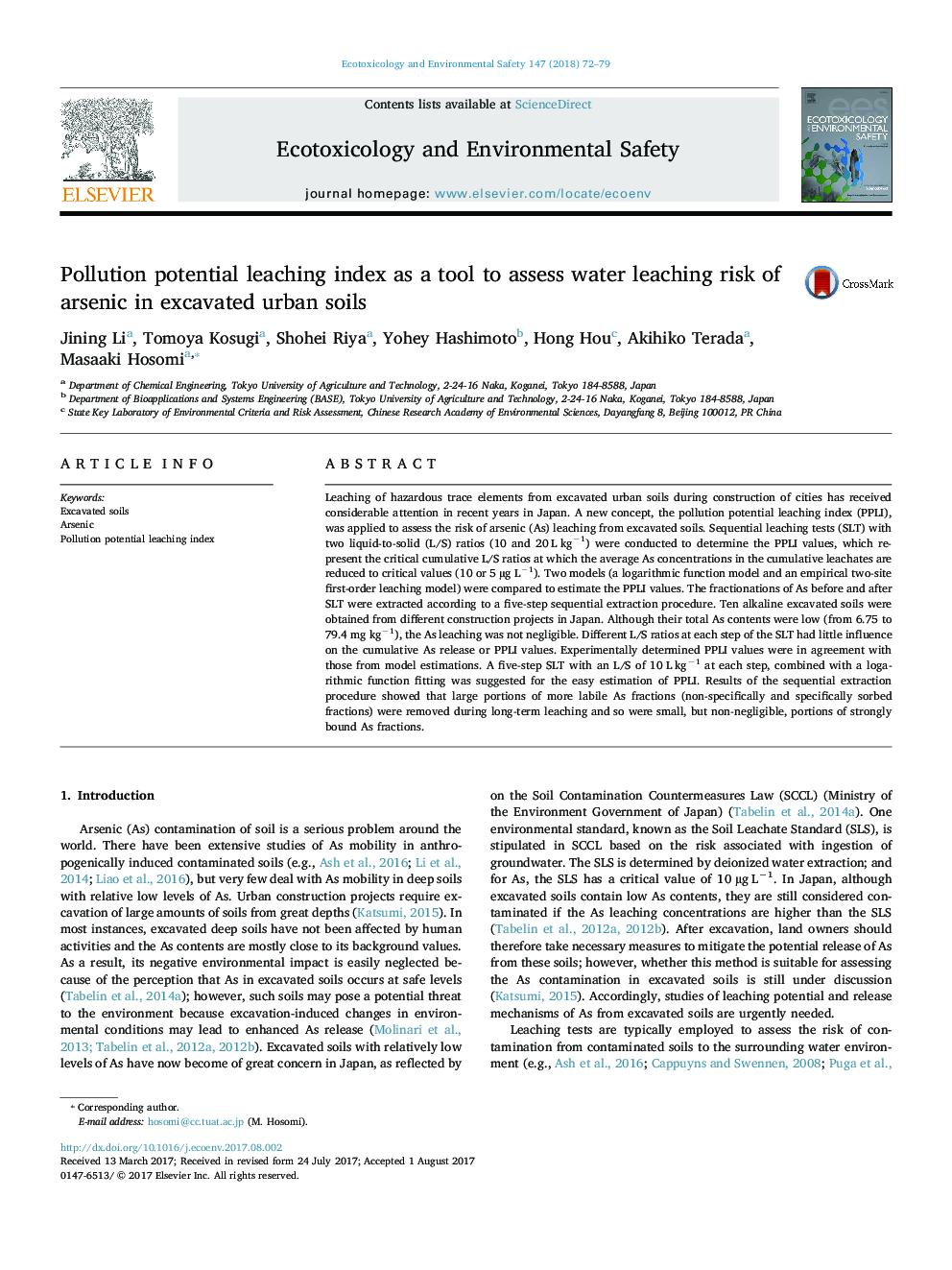| Article ID | Journal | Published Year | Pages | File Type |
|---|---|---|---|---|
| 5747852 | Ecotoxicology and Environmental Safety | 2018 | 8 Pages |
Abstract
Leaching of hazardous trace elements from excavated urban soils during construction of cities has received considerable attention in recent years in Japan. A new concept, the pollution potential leaching index (PPLI), was applied to assess the risk of arsenic (As) leaching from excavated soils. Sequential leaching tests (SLT) with two liquid-to-solid (L/S) ratios (10 and 20 L kgâ1) were conducted to determine the PPLI values, which represent the critical cumulative L/S ratios at which the average As concentrations in the cumulative leachates are reduced to critical values (10 or 5 µg Lâ1). Two models (a logarithmic function model and an empirical two-site first-order leaching model) were compared to estimate the PPLI values. The fractionations of As before and after SLT were extracted according to a five-step sequential extraction procedure. Ten alkaline excavated soils were obtained from different construction projects in Japan. Although their total As contents were low (from 6.75 to 79.4 mg kgâ1), the As leaching was not negligible. Different L/S ratios at each step of the SLT had little influence on the cumulative As release or PPLI values. Experimentally determined PPLI values were in agreement with those from model estimations. A five-step SLT with an L/S of 10 L kgâ1 at each step, combined with a logarithmic function fitting was suggested for the easy estimation of PPLI. Results of the sequential extraction procedure showed that large portions of more labile As fractions (non-specifically and specifically sorbed fractions) were removed during long-term leaching and so were small, but non-negligible, portions of strongly bound As fractions.
Keywords
Related Topics
Life Sciences
Environmental Science
Environmental Chemistry
Authors
Jining Li, Tomoya Kosugi, Shohei Riya, Yohey Hashimoto, Hong Hou, Akihiko Terada, Masaaki Hosomi,
